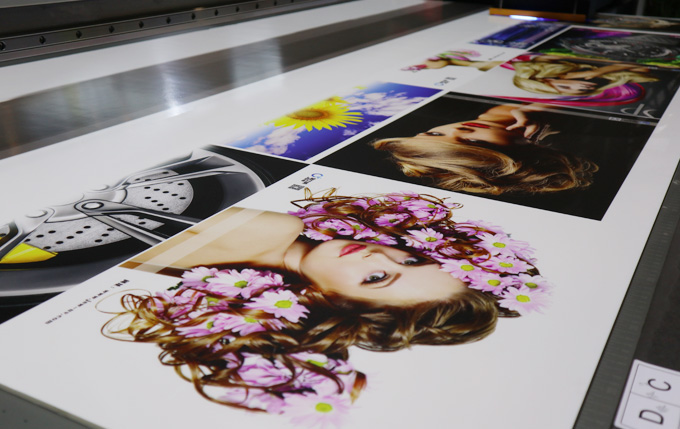What are the application range of
large format UV flatbed printer and the image formats that are often available during printing? Skycolor UV printer made a brief introduction.
Large format uv flatbed printer application range:
1. Advertising industry: plexiglass light box, KT board, PVC board, glass, label, equipment operation panel, acrylic, PP board, PC board, aluminum board, etc.
2. Decoration industry: background wall (tile, glass, PVC, marble), PVC gusset board, PVC resin board, etc.
3. Packaging industry: paper packaging printing, wood packaging printing, metal packaging printing, PVC, leather packaging printing, organic glass packaging printing, etc.
4. Digital industry: mobile phone shells, U disk shells, chassis shells, mobile phone holsters, notebook shells, mobile phone power supply shells, tablets, etc.
5. Glass industry: art glass, frosted glass, transparent glass, plexiglass, tempered glass, etc.
6. Furniture and building materials: ceramic tiles, ceramics, ceilings, glass doors, plywood, wallpaper, coffee tables, ashtrays, etc.
7. Stationery gifts: pen cases, notebooks, readers, metal business card holders, etc.
8.Crafts: clocks and watches, stone paintings, wedding photos, textile crafts, metal crafts, crafts, ceramic crystal crafts, plexiglass crafts, oil paintings, etc.
Large format uv flatbed printer common printing formats:
1.AI format: It takes up little hard disk space, opens fast, and is convenient for format conversion.
2. EPS format: It is a comprehensive format among the universal interchange formats commonly used in desktop printing systems. The EPS format is often used in printing and printing. It can store Duotone information, store Alpha channels, and store path and screening information.
3. TIFF format: It is a labeled image file used to save the image composed of color channels. The biggest advantage is that the image is not restricted by the operating platform, and it can be used universally regardless of PC, MAC, or UNIX. It can save Alpha channel and can store data in a file.
4. JPEG format: It is a kind of compressible file, used to remove redundant images and color data, and obtain extremely high compression rate while showing very rich and vivid images. In other words, you can get better image quality with the least amount of disk space.
5. PDF format: a convenient file format, mainly composed of three technologies: derived from PostScript, font embedding system, data compression and transmission system. The advantage is that it is cross-platform and can retain the original format of the file.

